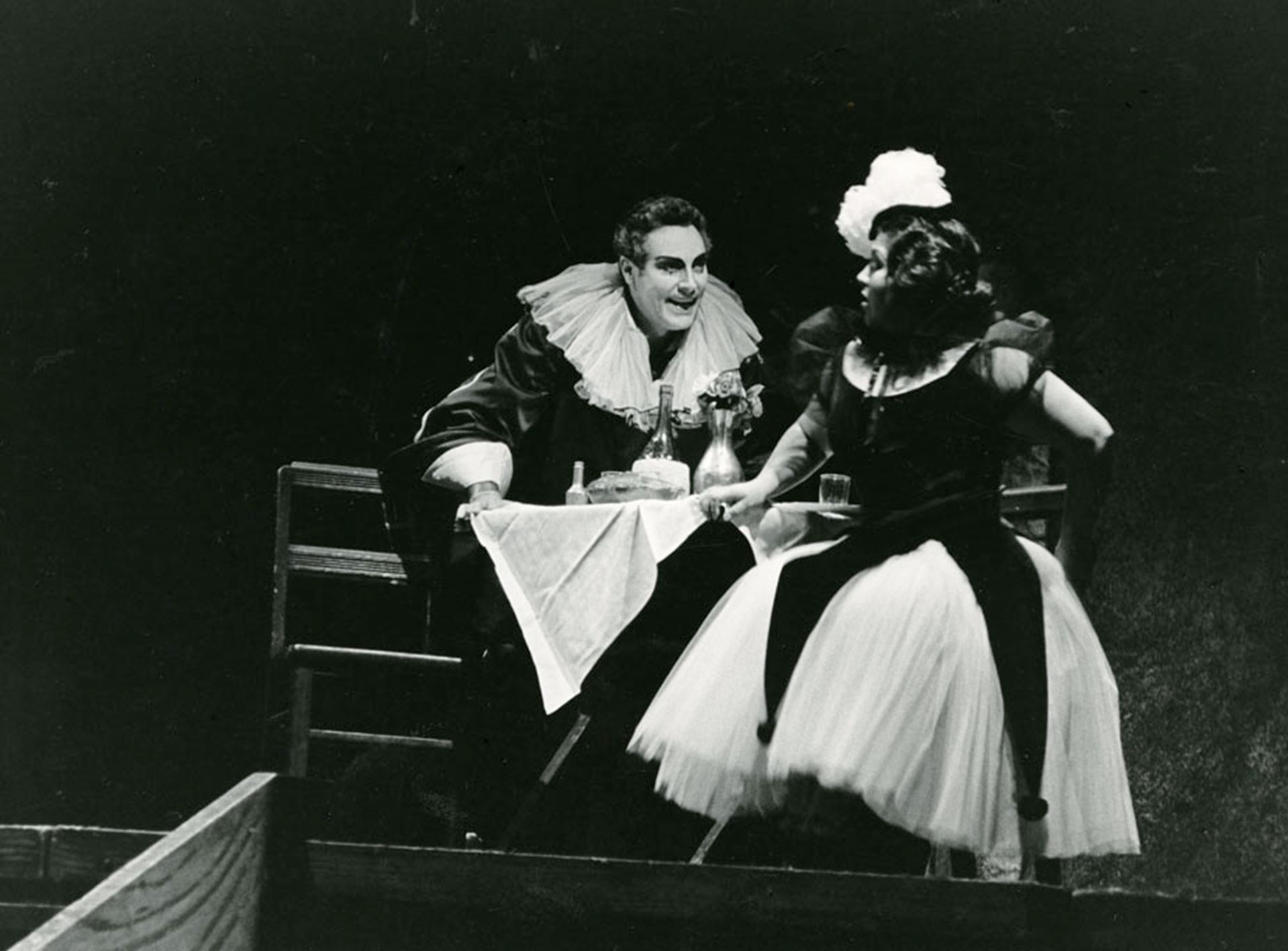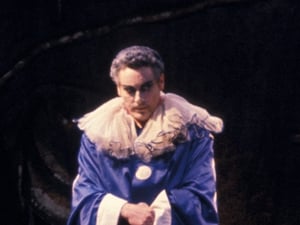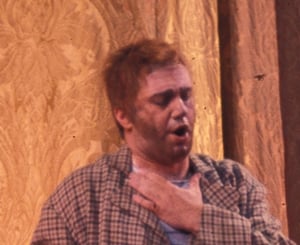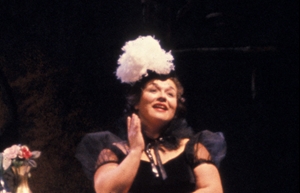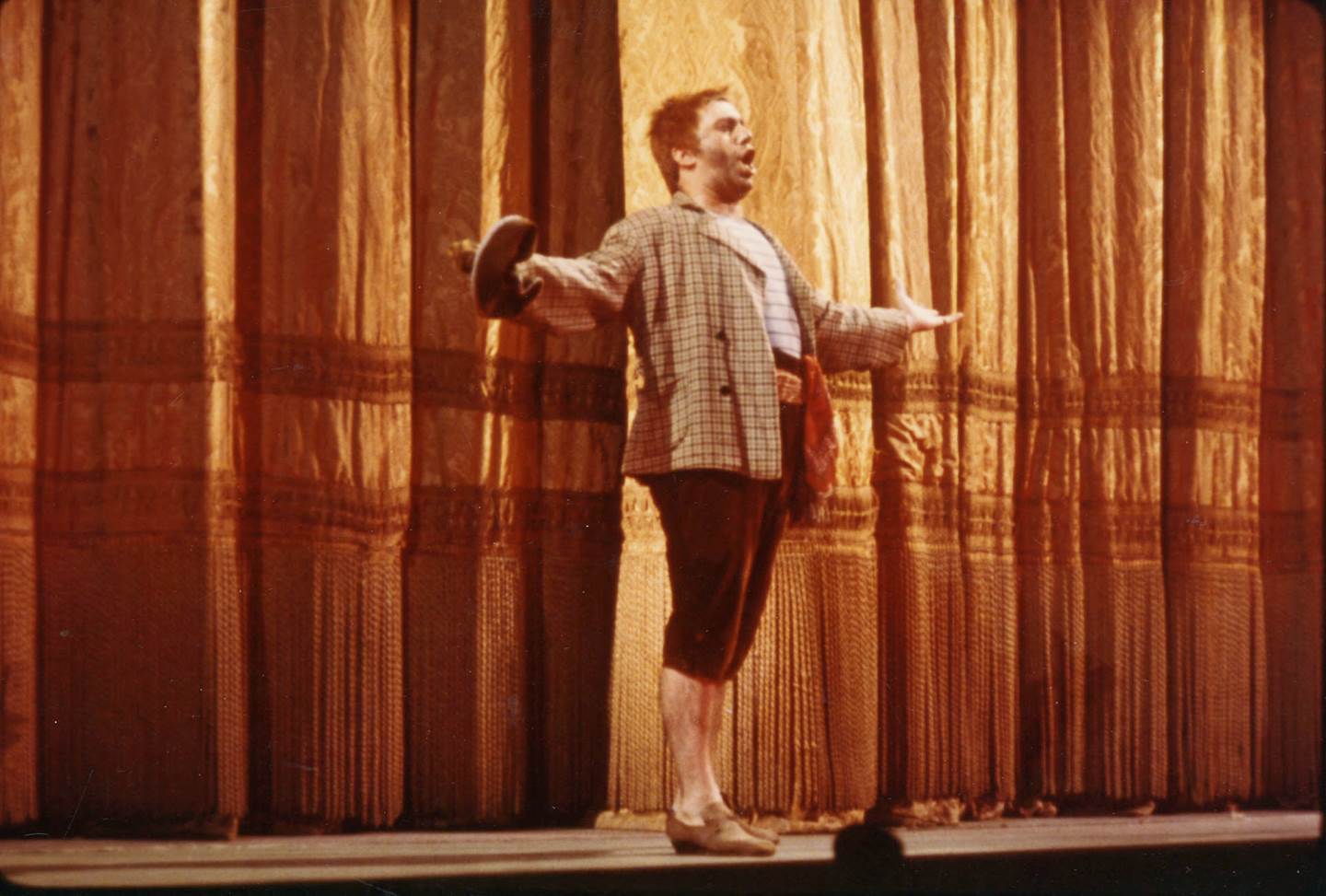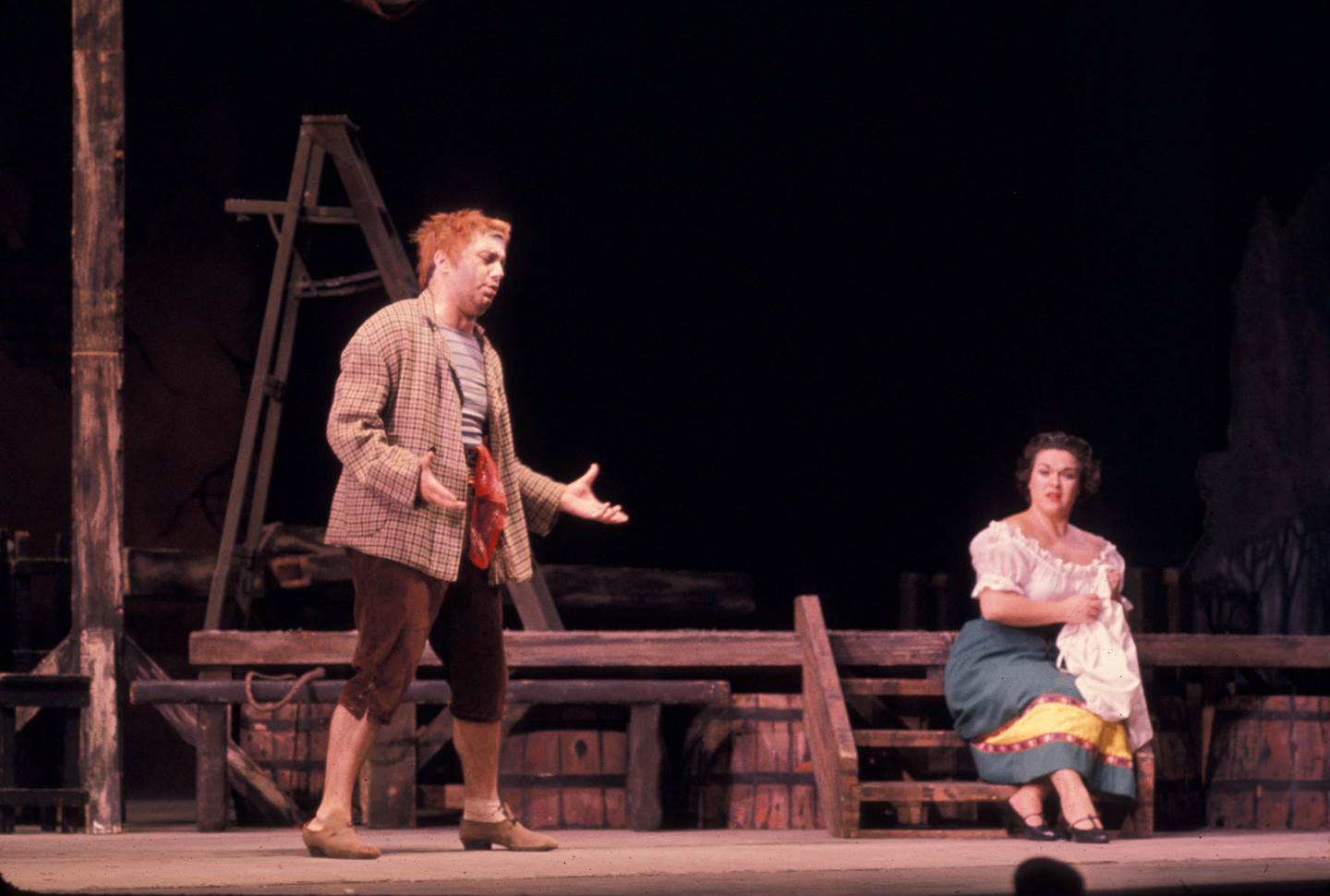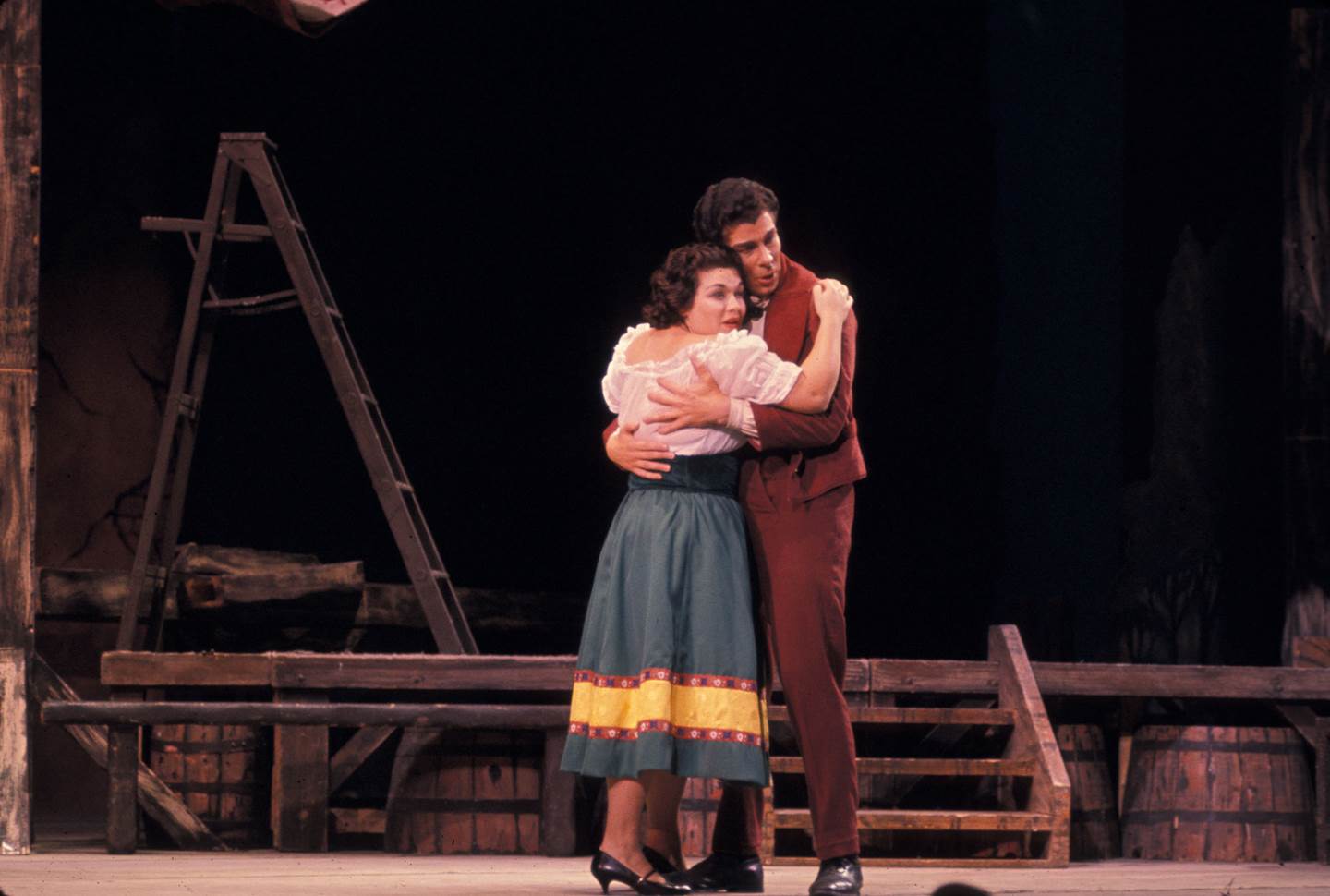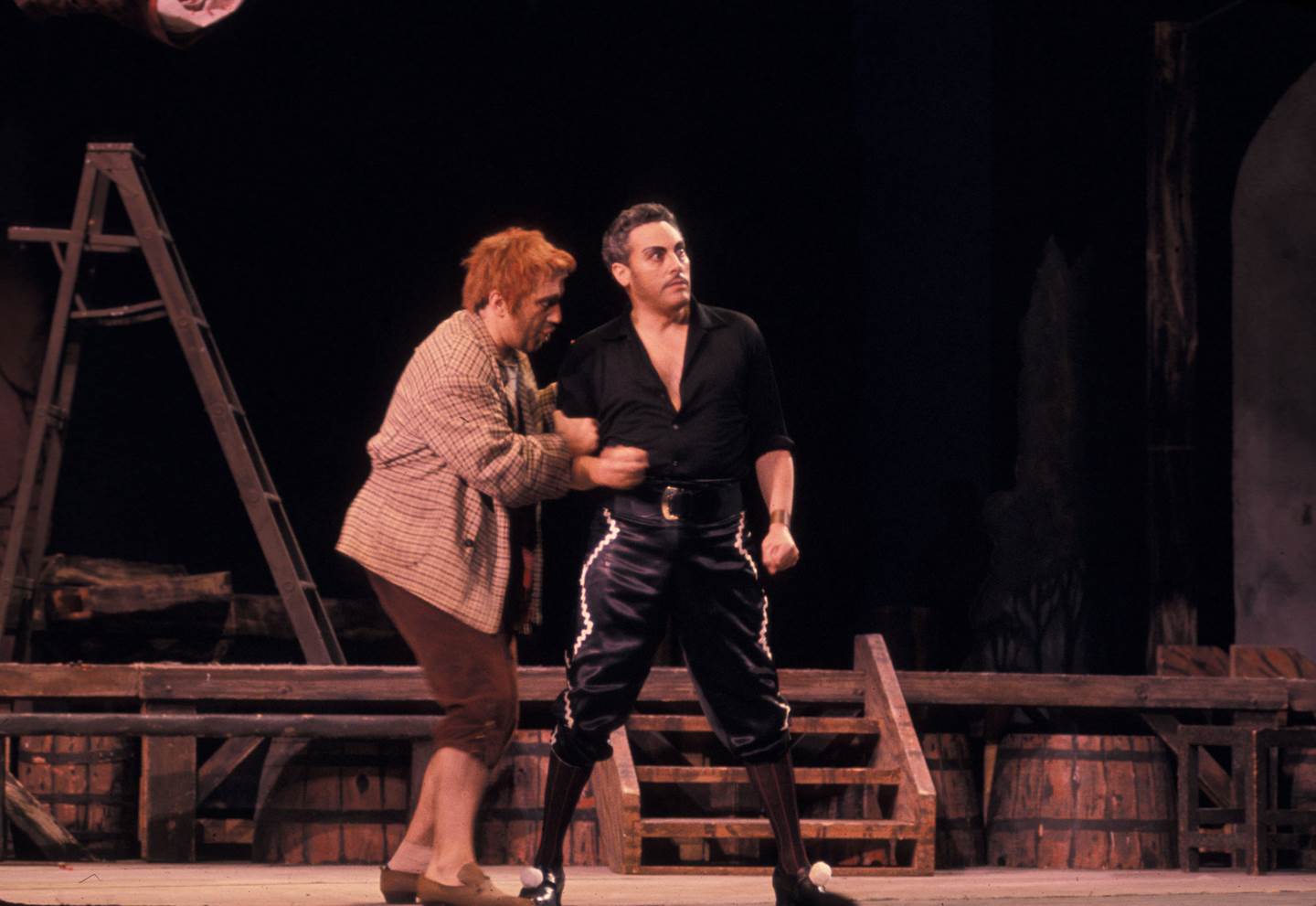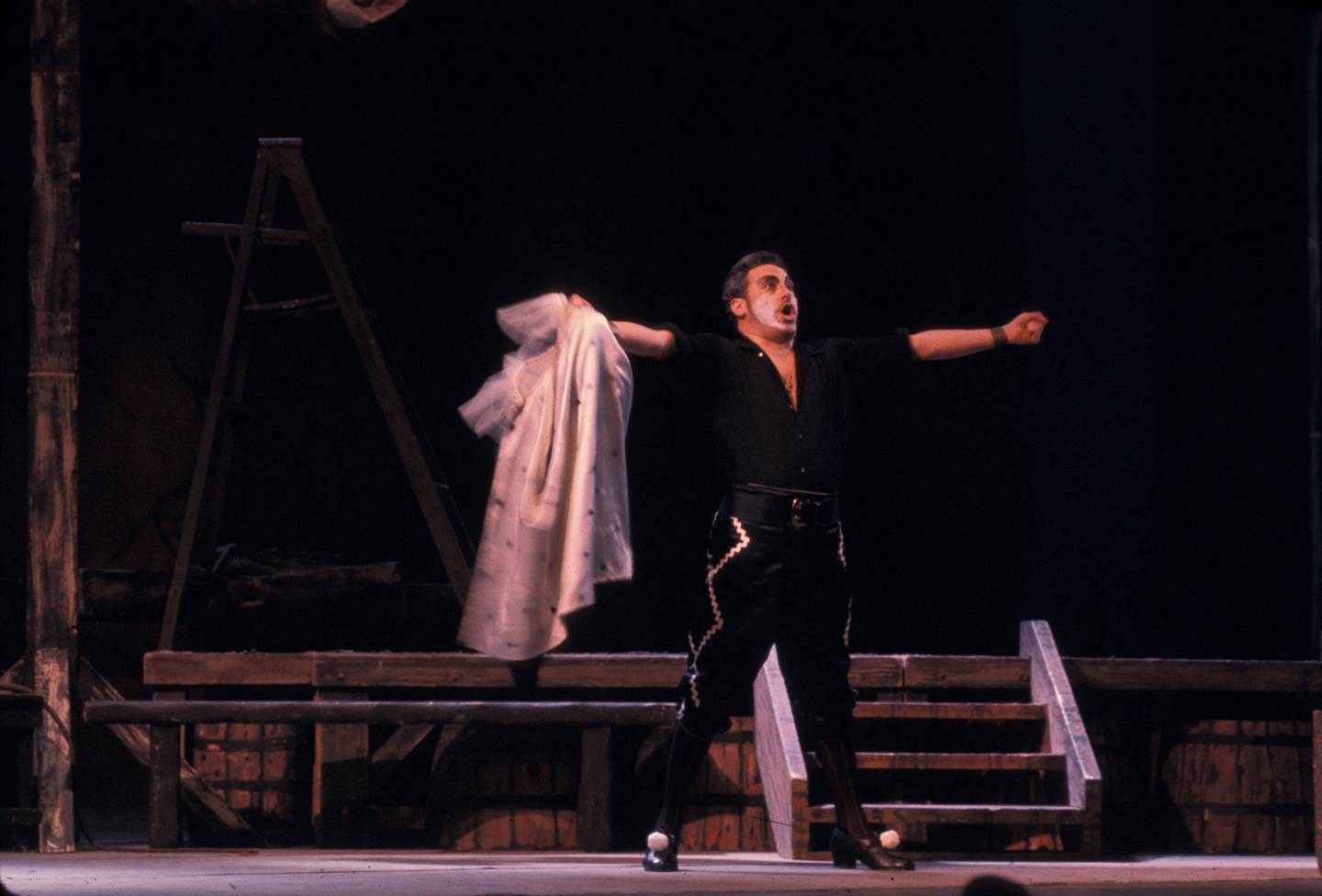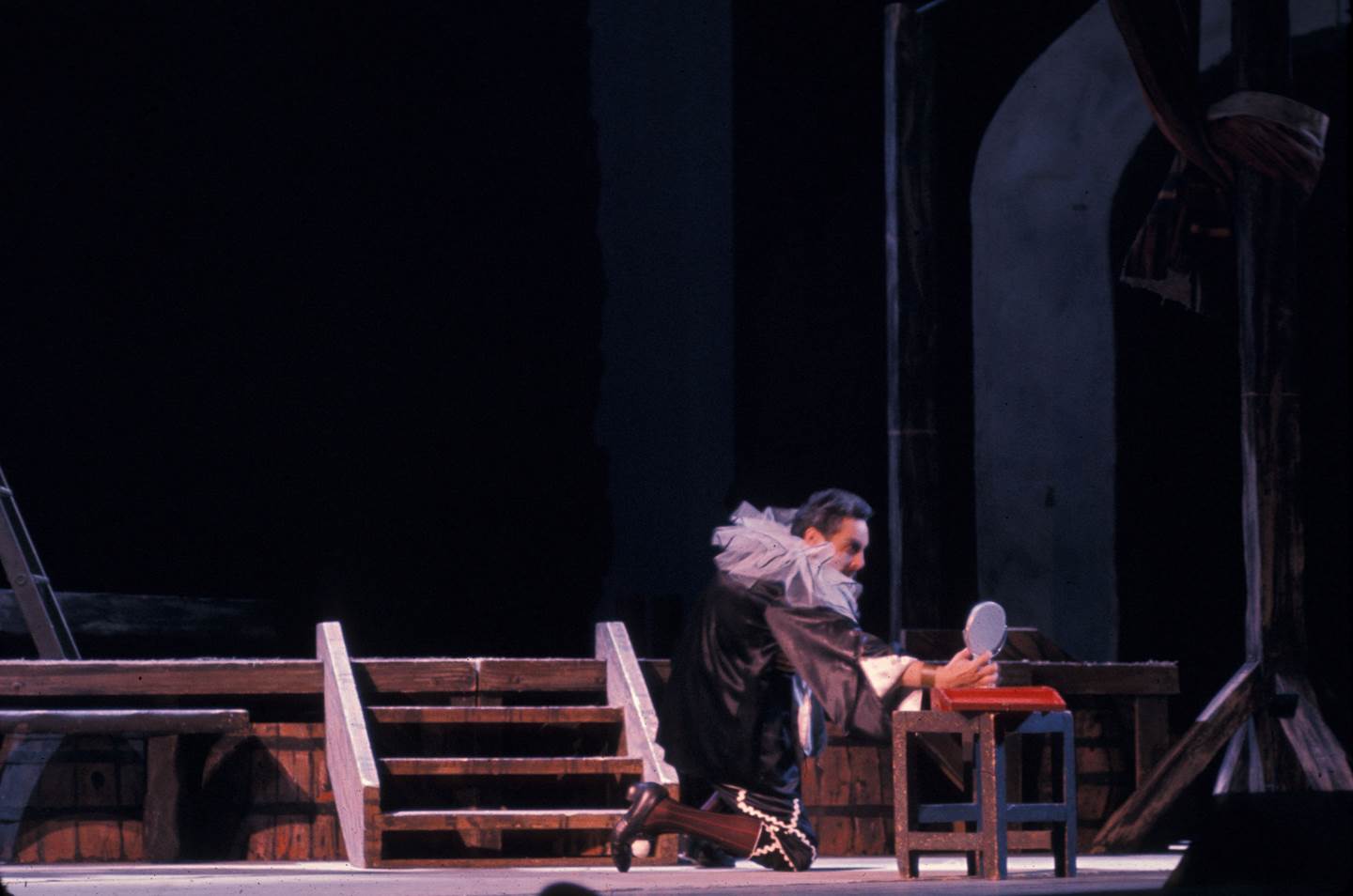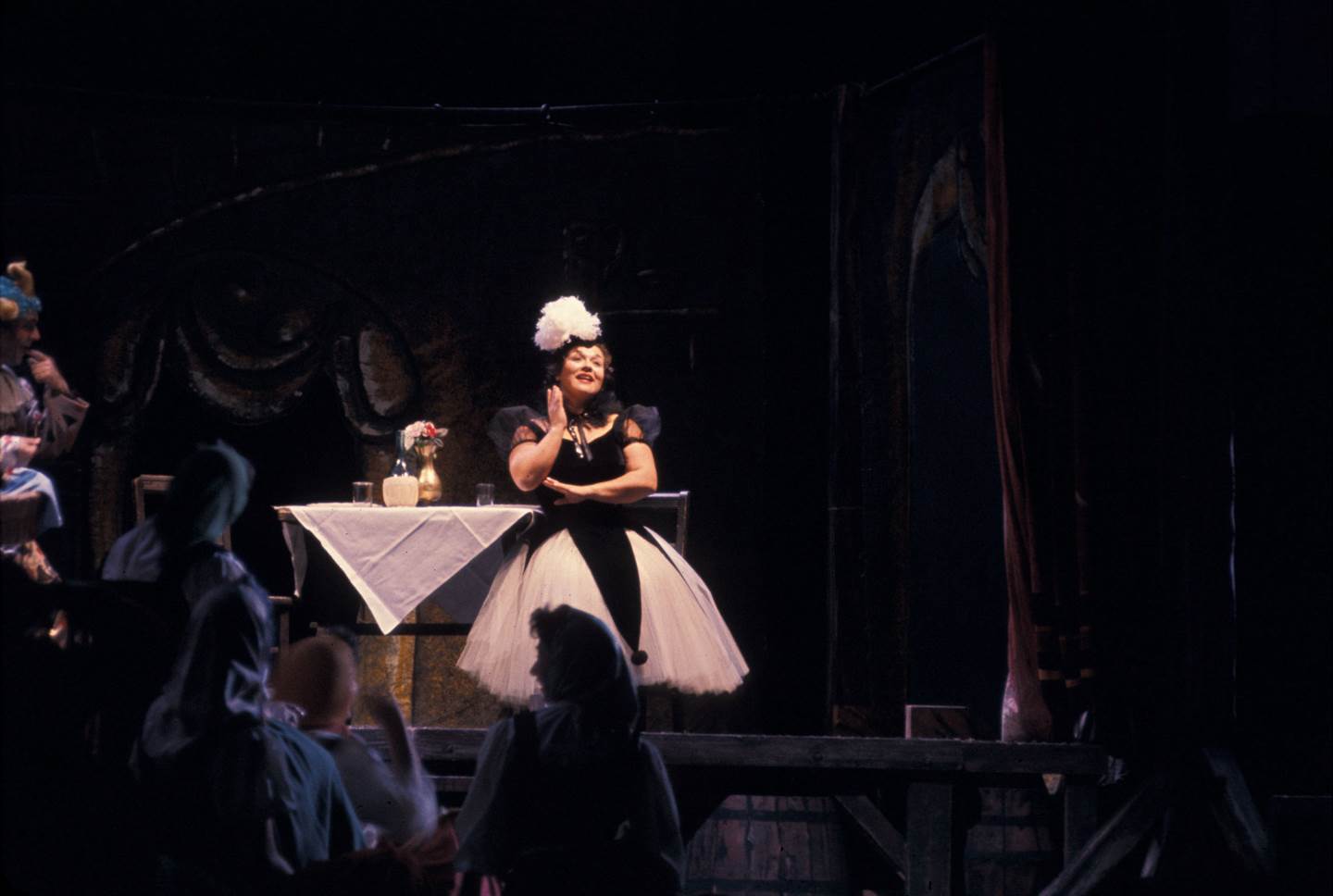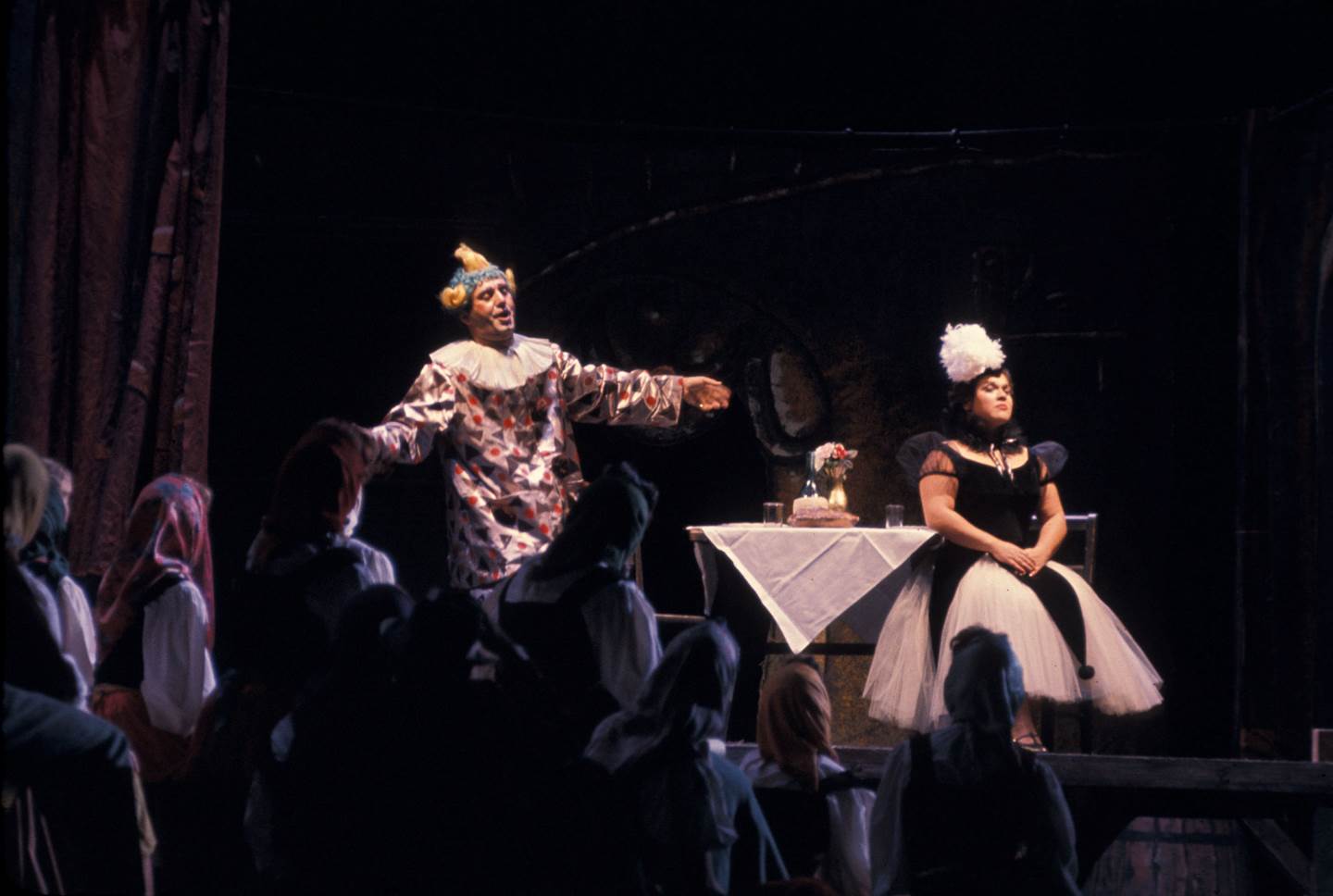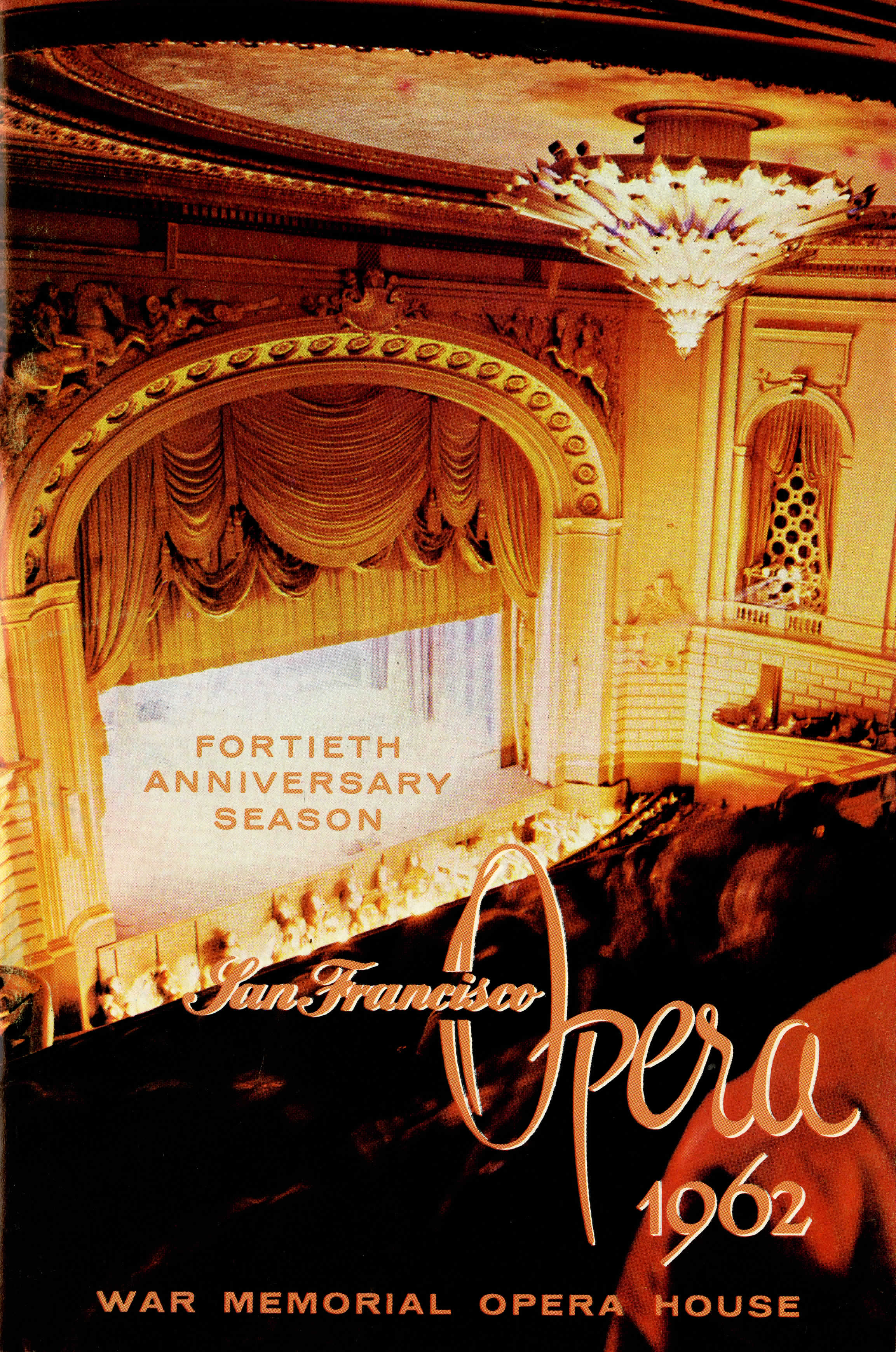Pagliacci, à la 1962
By Judith Malafronte
(read time ~ 8 minutes)
This October 13, 1962 performance of I Pagliacci was on a double bill with Mascagni’s Cavalleria Rusticana, but instead of the traditional pairing “Cav and Pag,” it was Pagliacci that began the evening. The theatrical milieu, and especially the opening “Prologue,” provides a suitable first course for an evening of village drama from Southern Italy and Sicily.
Conductor Oliviero De Fabritiis keeps the opening brisk and colorful, with the French horn solo sounding particularly melancholy as it introduces Canio’s theme. The playing is noticeably different than we hear today, with the soloist paying particular attention to the composer’s detailed marcato markings. These horizontal lines over nearly every note indicate an importance to each, with a slight separation between them, and the instructions “ben cantato con dolore” (well sung in a sad manner) and “stentate” (heavy or labored) are followed. The strings bring a lovely, stylistically appropriate portamento (gently sliding between notes) and the harp is prominent.
Tonio steps before the curtain, costumed as the commedia dell’arte servant Taddeo. The legendary Ettore Bastianini was at the height of his powers. At first singing as a bass, his career had taken off after retraining as a baritone, and his command of the Verdi repertoire was complete. At San Francisco Opera he was heard in such major Italian roles as Amonasro (Aida), Nabucco, Rigoletto, Renato (Ballo in maschera), di Luna (Trovatore), Marcello (Boheme), Scarpia (Tosca), and Gerard (Andrea Chenier), as well as Carmen’s Escamillo. Tragically, only a month after this Pagliacci performance he would be diagnosed with a throat tumor. Treatment was hidden from the public, and he was able to sing for a few more years, but died in 1967 at the age of 45.
Here Bastianini’s generous, commanding voice is on full display, as the text contrasts the old ideas of acting—“the tears we shed are false,” tossed off as if spoken—with a new sensibility—“we are men of flesh and bone,” reaching to a massive high A-flat that provokes some early applause. Lyrical passages such as “Un nido di memorie” float easily, and the climactic high notes are securely placed and balanced in color with the rest of the voice.
As the acting troupe enters the village, Canio’s shouts are heard above everybody. Mario Del Monaco could often sing haphazardly, but always nailed the high notes (surely these villagers got the message that the show would begin “a ventitre ore”—at 11 PM), although the orchestra is often overpowering in this scene. Canio’s first aria, a reaction to jokes about his wife, contrasts the illusion of acting with the reality of a moral transgression. Del Monaco’s range of colors here is extraordinary as he uses snarling, bright vowels for a sarcastic tone. Like Bastianini, he can move easily between singing and speaking (“parlando”) because all sounds are supported by the breath and are equally resonant.
At San Francisco Opera Del Monaco appeared in many of the same Italian blockbusters as Bastianini. Having sung Radames (Aida), Andrea Chénier, Des Grieux (Manon Lescaut), Luigi (Tabarro), Manrico (Trovatore), Faust (Mefistofele), Cavaradossi (Tosca), Otello and Don José (Carmen), this was the tenor’s last season with the Company.
Like so many Italian singers of the early- and mid-twentieth century, Del Monaco knew how to sing forcefully and dramatically, emphasizing words and conveying emotion without yelling. In the old school Italian singers we also hear a more natural delivery, the vocal rendition of a line of thought, rather than the pushing and bombast we too often hear today. This is evident in the flow of Bastianini’s “Prologue” as well as Del Monaco’s first aria (and will be equally clear in “Vesti la giubba.” The voice follows the thought. Tempos are more fleet and lyricism propels the words without hammering or heaviness, while high notes are organically delivered, not telegraphed “moments.”
Holding her own with these superstars is the American singer Marilyn Horne at a turning point in her career. From Nedda’s first utterances we notice the warm and easy sound, suggesting a sensual person. Nedda listens to the birds in the aria “Stridono lassù” and Horne’s voice soars with the rangy, lyrical phrases. She is somewhat taxed at the climax, however, and takes the final note a bit under pitch.
When Tonio interrupts with his unwanted advances both Horne and Bastianini sing with more urgency as the situation becomes threatening. Silvio, Nedda’s local lover, arrives in time to prevent a dangerous physical attack. The American baritone Russell Christopher had just won the Metropolitan Opera National Council auditions—singing Tonio’s Prologue from Pagliacci—and displays passion and a warm intimacy here. He makes a special moment of the aria “Decide il mio destin,” urging Nedda to run away with him, and shows great musicality and a wide range of dynamics throughout their love duet. Again, in spite of some gorgeous phrases, Horne struggles with the floating lines of “tutto scordiam,” ending quite out of tune in the final close harmony of the tender “T’amo, t’amo.”
Christopher made his Met debut a few months after this, in the secondary role of the Marquis d’Obigny in La Traviata (with Joan Sutherland), where his “sturdy sound” was praised. At his death in 2014 it was noted that the baritone had sung in over twenty-eight seasons at the Met, having appeared 1,410 times in supporting roles in the standard repertory before his retirement in 1991.
For those more accustomed to hearing Marilyn Horne knock out pages of tricky runs and leaps in contralto roles by Rossini and Handel, consider that 1962 was an important year for her. Born in 1934, Horne’s special connection to California began when the family moved to Long Beach in 1945. The youngster sang for local choruses and churches, did some movie studio gigs, and moved to Europe in 1956 for serious opera study. Horne credits her big break to 1960 performances at San Francisco Opera of Alban Berg’s difficult, atonal opera Wozzeck, a work she had already sung in Germany. San Francisco Opera then heard her in a dizzying mix of soprano and mezzo roles in a range of light and dramatic repertoire, including La Vecchia in Puccini’s Gianni Schicchi, Hermia in Benjamin Britten’s Midsummer Night’s Dream, Marina in Boris Godunov, Marzellina in Beethoven’s Fidelio, Rosina in Il barbiere di Siviglia, and the title role in Carmen. What an asset this versatile artist was to the Company! In the fall of 1962 alone she sang Marie in Wozzeck, Musetta in La Boheme and Marie in The Daughter of the Regiment, with our performance of Pagliacci thrown in the middle. Within days of this, Horne and her husband Henry Lewis appeared on the cover of JET magazine tagged as “pretty soprano and her talented husband score in nationwide concerts.” Lewis was an up-and-coming conductor and their interracial marriage, which lasted from 1960 to 1979, caused a minor sensation.
1962 was the year Horne’s repertoire began to shift away from soprano roles, as her partnership with Joan Sutherland and conductor Richard Bonynge moved into serious exploration of the neglected bel canto repertoire. As Horne’s career exploded, she returned to San Francisco Opera in her new low-lying Rossini roles of Isabella (Italiana in Algeri), Tancredi, Arsace (Semiramide), Cenerentola, and Calbo (Maometto secondo), as well as Handel’s Orlando, Vivaldi’s Orlando Furioso, Bellini’s Adalgisa (Norma), Verdi’s Dame Quickly (Falstaff) and Eboli (Don Carlo), along with Saint-Saens’ Dalila. Although she might have continued as an all-purpose soprano, the new-found repertoire brought out a musical imagination and stupendous vocalism that caused a sensation.
Tonio and Canio surprise the lovers and, in spite of the violent language (“Il nome! Il nome!”) and combative situation, both Bastianini and Del Monaco bridge the gaps between speaking, shouting, and singing with open throats and well-projected sounds. Bastianini makes a moment of the word “fingere” (you will have to wait and “pretend”), while Del Monaco launches “Recitar … Vesti la giubba” in great anger. In bitterly ironic tones, Canio laments that he must put on the clown costume and paint his face, no matter the pain and anguish he feels. Del Monaco moves things along, milking the high notes and stretching out the final lines. (For a sense of how extraordinary his physical and vocal acting could be, check out his delivery of this aria, ten years earlier, on the Ed Sullivan Show.)
The second act presents the troupe’s actual show, with light, prancing, old-fashioned music in a gavotte style. Horne brings particular clarity to her diction as the fickle Colombina, while Raymond Manton’s Beppe makes the most of Harlequin’s love serenade with bright lyricism and plenty of vocal personality. This American tenor appeared at San Francisco Opera in every season between 1955 and 1979 in character roles, and his comic timing was often praised in the press.
Bastianini also telegraphs his acting as the unwanted suitor Taddeo with bright sound and a little cadenza. One can almost see him leering at Horne’s Colombina, and the moment is not without menace. When Canio enters as the jealous Pagliaccio, the scene quickly deteriorates, and these supreme singing actors are alert and responsive to the mounting tension. Del Monaco demands again “il nome!” while Horne brightly resumes play-acting. She calls him by his stage name, “Pagliaccio,” which only provokes the outburst “No! Pagliaccio non so!” Del Monaco rides the full force of the orchestra, moving easily into the lyrical, harp-accompanied “Sperai tanto.” Horne’s defiant high B (“Not even if it costs me my life!”) is blazing and the music moves swiftly to the tragic ending with its spoken line, as notated in the score, “La commedia è finita.”
Judith Malafronte (mezzo soprano) has sung with opera companies, orchestras, oratorio societies, and early music groups throughout the world. Holding degrees from Vassar College and Stanford University, she has recorded for major labels in a broad range of repertoire and writes regularly for Opera News, Early Music America magazine, and other print and online outlets. After fifteen years on the faculty at Yale University, she now teaches voice in the Historical Performance department at Indiana University’s Jacobs School of Music.


